#venusian satellite
Explore tagged Tumblr posts
Text
Venus may not have a moon in the technical sense, but it does have a quasi-moon, dubbed Zoozve.
#zoozve#planet venus#moons#natural satellites#quasi moon#quasi satellite#venusian satellite#venus#solar system
11 notes
·
View notes
Text
Humans have the capability of perceiving when they're being stared at, even if they can't see it.
Dr. T'Chem was staring at Lieutenant /θkɡɾɑːˈŋæ/ (or as his current fling affectionately nicknamed her, "Tucker-Annie"), whose dorsal spikes were still rattling after the incident at the holodeck. It was his first time at the witness stand, and he didn't want to ruin a young star sailor's life.
Lieutenant Tucker-Annie was the combat specialist in charge of the training dojo of Federation Vessel TSN457, named after the Terra-Saturn-Ceres coalition where Dr. T'Chem currently served as the xenoanthropologist charged with facilitating human integration to the local Federation of Fraternal Planets and Satellites. The FFPS had the goal of finding planets with intelligent life to trade resources and technology, and due to their recent incorporation, local research vessels were fitted with diverse crews to acclimate everyone to each other's cultures and biological needs. Dr. T'Chem was the human expert in the ship, and was tasked with helping smooth over interpersonal relations among the crew.
The relations were, at that moment, as bumpy as Lt. Tucker-Annie's dorsal spike line.
An incident had occurred during a training exercise. The squad consisted of a Venusian, two Saturnians, three Ceresians, two monks from the Transcorporeal Temple of Robotic Ascension, and five Terrans (two humans, two dogs and a cybernetically enhanced cat). The exercise consisted of getting through a generic jungle scenario and, unbeknownst to the squad, avoiding a team of ninjas lead by Lt. Tucker-Annie trying to take them out one by one. It was supposed to test the way they would react to a surprise attack.
It was not supposed to reveal that humans could sense when they were being stalked.
Of course, any trained sailor would have an ingrained knowledge of potential threats and how to spot them. Look for the shadows that are too dark, listen for the spot air isn't blowing from, things like that. Basic things most people don't think about but that can be identified if you think about them.
This was not that.
"Something's watching us," said Crew Johnson, in that sloppy way only creatures with lips spoke.
"What do you mean? There's cameras everywhere, of course they're watching us," responded Crew Hessikh, slithering over the vines on a tree branch to cross a river. She grabbed the axe in Crew Johnson's belt with her telekinesis and took down a small tree to serve as a bridge.
"Crew Flufflepaws, could you please take a look?" Asked Crew Johnson, nervously looking around. Crew Flufflepaws got on the tree as well and scanned the terrain from above.
"I can't see anything, or smell anything. And my hearing isn't what it used to be. I'll stay on the lookout for—" a horrendous hiss interrupted the automatic translator's feed. Crew Flufflepaws' comm line cut off.
Hessikh and Johnson looked at each other. That was the strongest fighter of their team, gone. They knew it was a simulation, but it still gave them chills.
The rest of their crew mates were split into two different teams further along the path. Crew Fanning's voice came from the comm line.
"Johnson, Hessikh, are you okay? What happened to Flufflepaws?"
"We don't know, Johnson said something was watching us and it went to check, then we lost comms."
"I felt it too. I know this isn't that kind of exercise but I think— AAAHHH!"
Two blaster shots were heard, then a thud.
Lieutenant Tucker-Annie, who was watching Hessikh and Johnson from the mud pit behind the latter, had her tranquilizer dart ready. She got ready to shoot down Hessikh, but then heard a voice over the comm line.
"Code Lithium, we have a Code Lithium, we have to end the simulation, I just took down- I can't-" the breathing was sounding heavier and faster, too fast for a human.
"Fanning, calm down, remember your sutras. We need you focused, what happened?"
"I felt like I was being watched, so I turned around and saw this thing and it scared me and I jumped and I thought it was on stun mode and-"
"It's alright, we're calling it off. Captain, we have a Code Lithium! End the simulation now or- fuck, there it is again. Hessikh, do you see any heat sources?"
"Nothing out of the ordinary- why haven't they shot it down alre-"
The next thing Lieutenant Tucker-Annie remembered was the sound of a heel turn over the mud, followed by darkness.
Lt. Tucker-Annie woke up in the hospital bay, getting her tail regenerated by a robot nurse. She looked over and found her underling on the next bed, with a huge bandage on the side of his neck and a wing in a cast. Thankfully, he would be alright as soon as the stem cell bank was reprogrammed after her treatment.
The disciplinary board was called, an investigation was open, and both Crew Fanning and their captain were put on paid leave while the investigation was ongoing. Dr. T'Chem was called in as an expert after a review of the holodeck footage revealed there was no way Crew Fanning could have heard, seen or smelled the hidden sailor.
It was the first time in a while he hadn't helped himself to a glass of Venusian whiskey for breakfast. He really didn't want to mess this up.
"And would you care to explain how this is possible, Doctor?" Asked the prosecution, staring him down with an unnerving amount of eyes.
"I am as astounded as this court; our firm has been looking into Terran medical literature and we're still trying to figure out how it works; they don't even know, but they know it does happen, it's been documented for thousands of years. I have a hypothesis, but I don't know if it's even testable."
There was a murmur in the court. The judge asked him to elaborate.
"The way eyesight works is the light bounces off of opaque bodies and in its way it collides with the lenses in our corneas, which send it to the brain as electrical signals to be interpreted. The light that doesn't go into our eyes just bounces off our bodies and other opaque objects as well, the photons go everywhere and anywhere. This is the same for most species in this constellation, including humans. But even other Terran species don't have these abilities, as Crew Flufflepaws has testified."
A begrudging meow was heard from the audience.
"Order in the court, please. Dr. T'Chem, what do you suggest is the origin of this mysterious sense?"
The camera drones all hoovered around him. Dr. T'Chem straightened his fins and got close to the microphone.
"I believe it's possible that humans have a sense of touch so sensitive that they can feel the photons that don't bounce back. The ones that go into an eye instead of an opaque body. I think humans can actually feel in their skin when they are being watched."
There was an uproar in the crowd. His paramour, a dark skinned young human from the human settlement known as "Colombia", grabbed the religious symbol on her necklace and made a gesture with it he hadn't quite figured out yet.
The trial had to go on recess.
The implications were incalculable. Three dozen biologists from six different planets, including Terra, had emailed him before the end of the day to ask him to justify himself. Multiple human religious leaders took the chance to link it to demonic possession or moral evils. By the end of the week, four different labs were trying to figure out a way to double blind test shooting a photon cannon on a human's back and trying to get them to sense it.
But most importantly, the news made it outside of the Federation. The rumours about this new species that couldn't be stalked got so far, it ended up affecting the outcome of a border conflict with the Betelgeuse Libertarian Army on the Federation's favour.
Humans were terrifying.
If this is what they evolved to be, what was their planet like?
#Dr. T'Chem's Office#humans are space orcs#humanity fuck yeah#humans are space oddities#humans are deathworlders#open art guild
2K notes
·
View notes
Text
and if you think that's cool, wait 'til you find out about Epimetheus and Janus, moons of Saturn which trade places every few years. being "co-orbital" they occupy the same approximate orbit but differ in size, both orbiting the same planet but in a location they can't sustain without pinging off the other. you know that scene in The Emperor's New Groove where they climb up the chasm by bracing against each other? these are like that.
and if they weren't doing that, saturn's rings would look very different because they're both shepherd moons with important roles in maintaining the rings and preventing them from coalescing into much less impressive-looking moons and moonlets. actually shepherd moons are their own whole thing which i recommend you read into. space is cool.
also venus rotates backwards compared to everything else in the solar system. and very, very slowly. about five solar days pass per venusian year. one possible reason for this is the past existence of a retrograde satellite which has long since fallen into venus, but which cancelled out a great deal of venus's rotation in so doing.
retrograde satellites (venus's one-time moon) slowly fall into their parents (venus) due to the influence of their primary (the sun)'s interaction. essentially, in a given year the sun spends slightly more time dragging the satellite against the direction it's orbiting and slowing it down than it does pulling the other way and speeding it up.
the same effect is slowly hurling luna away from the earth, about 1.5 inches per year. in some 600 million years, it will be too far away for us to ever see a total solar eclipse from earth's surface ever again. space is cool.
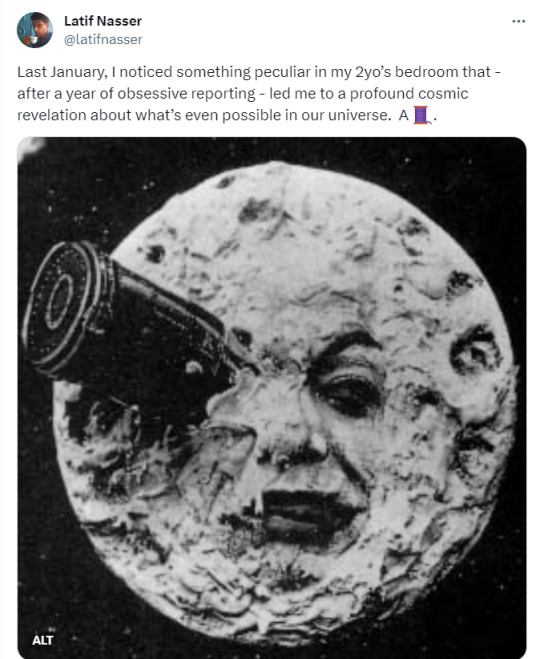
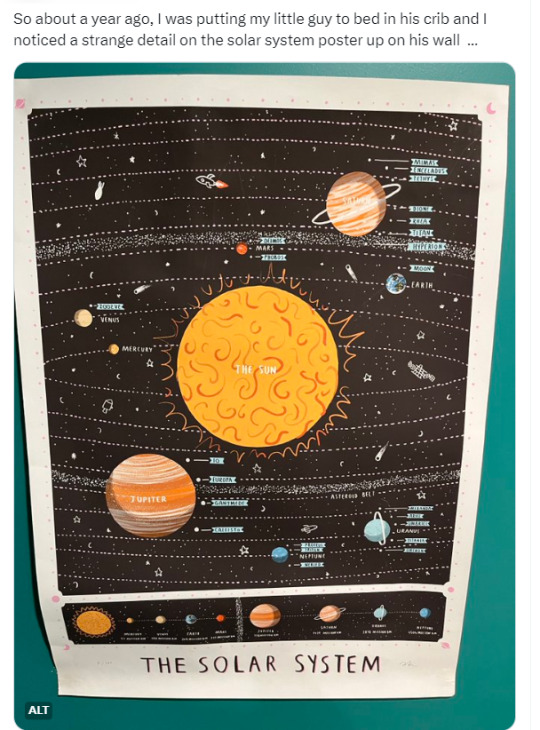
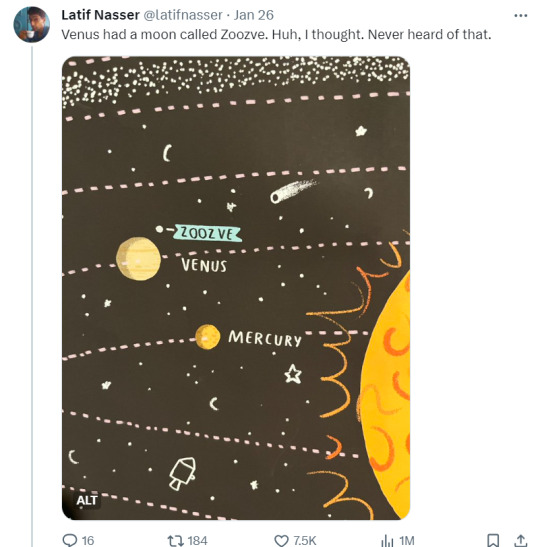
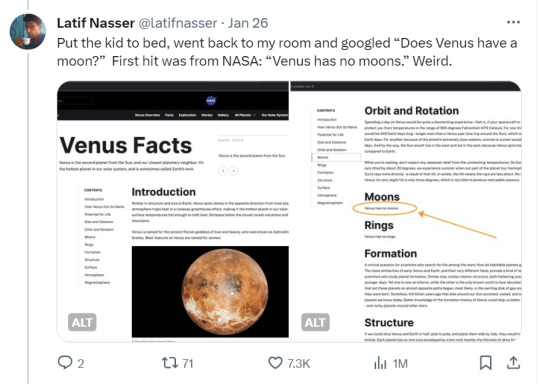
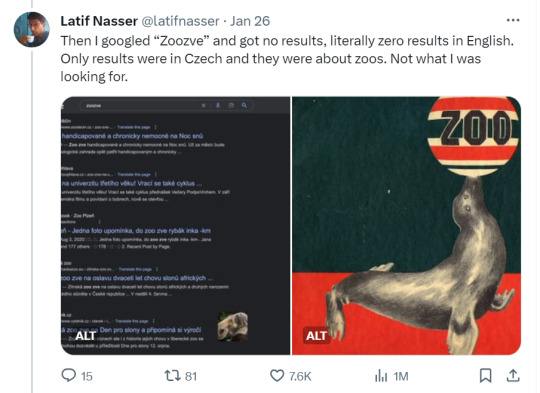
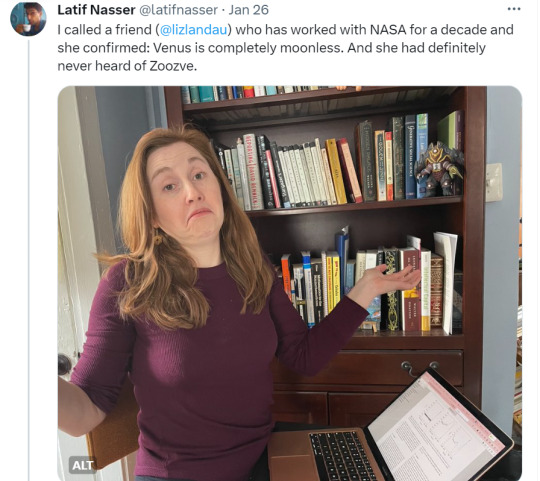
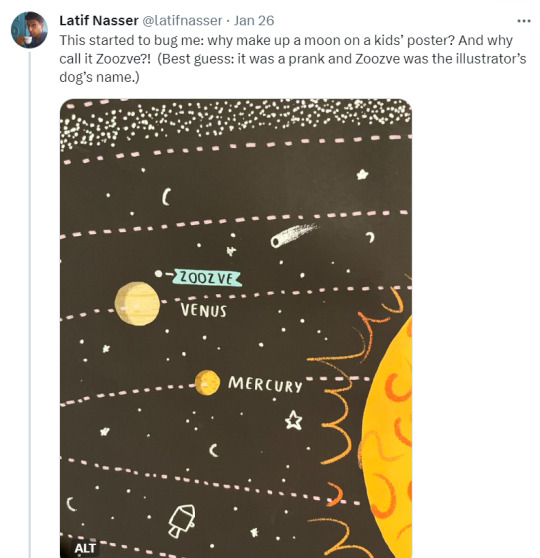
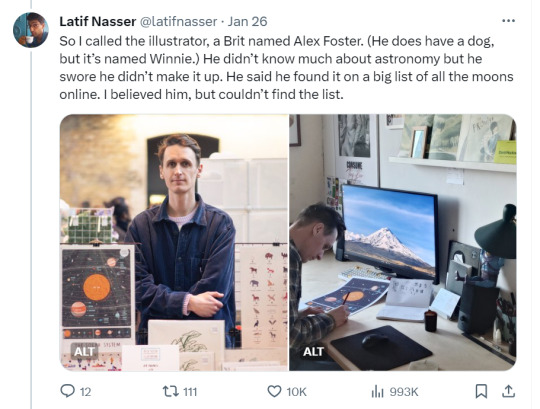

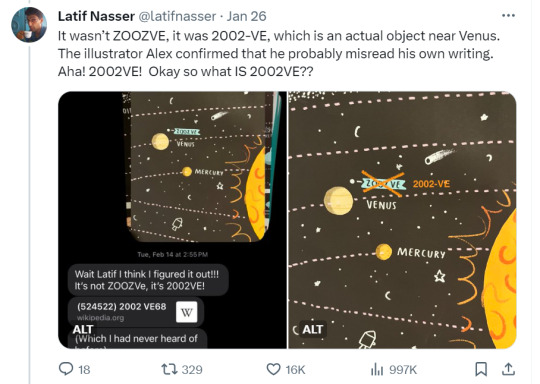

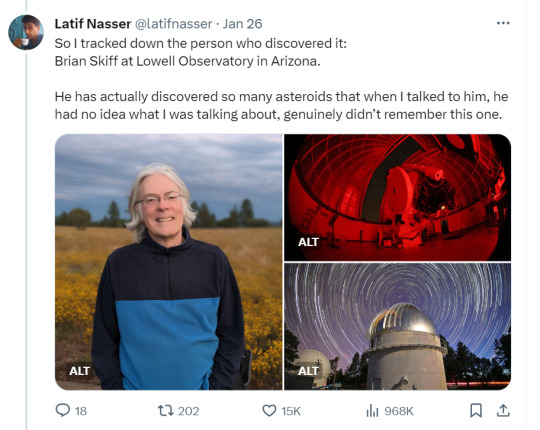
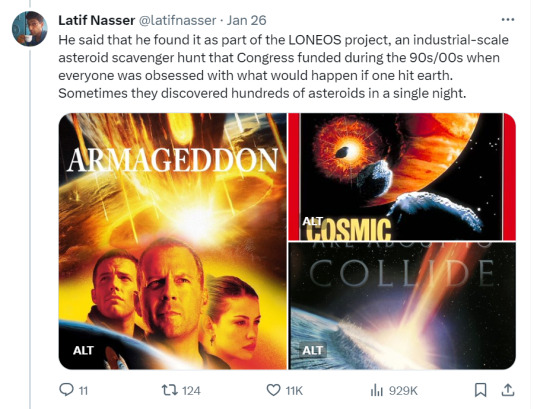
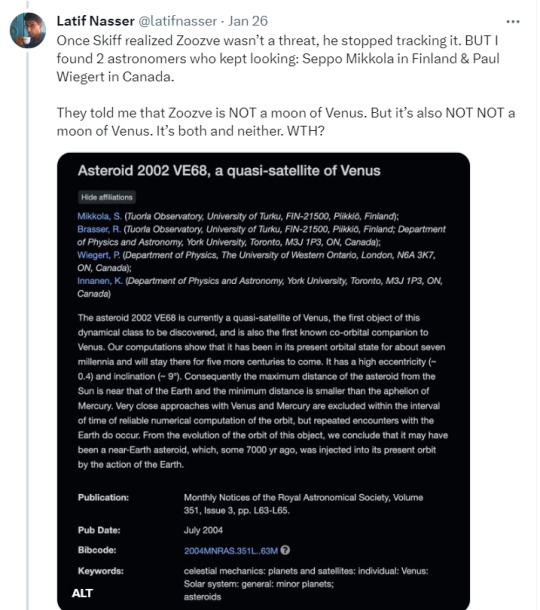
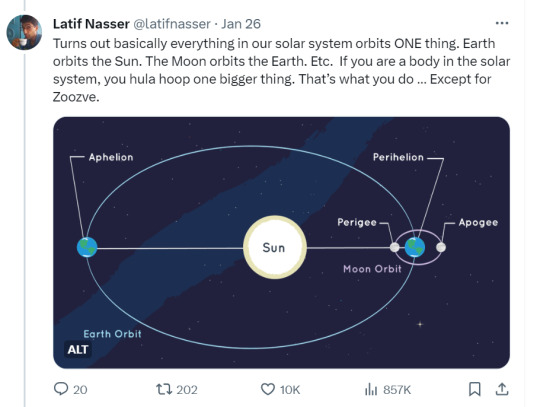
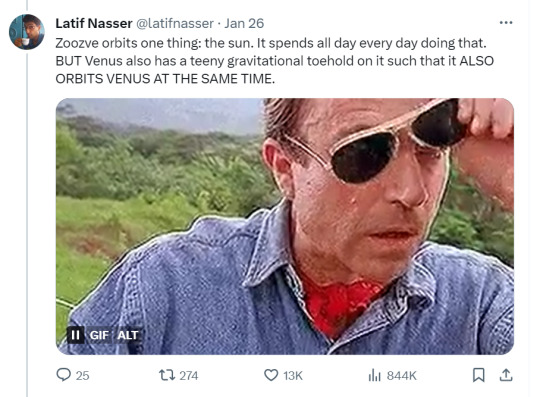
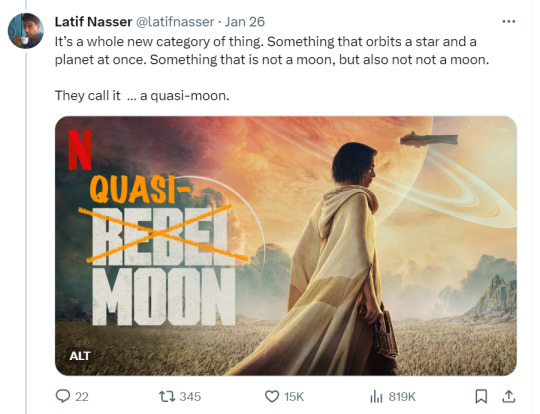
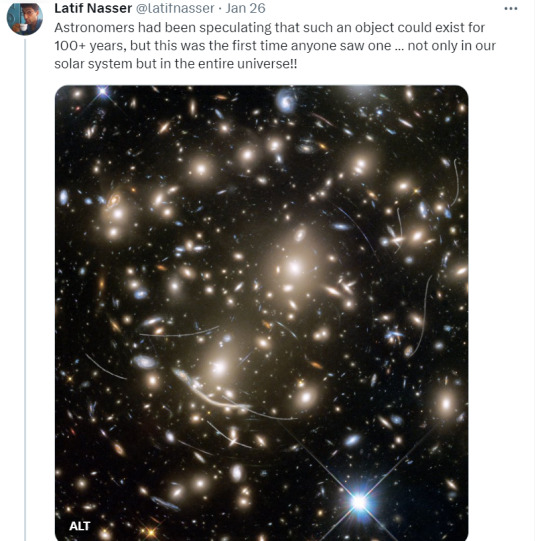


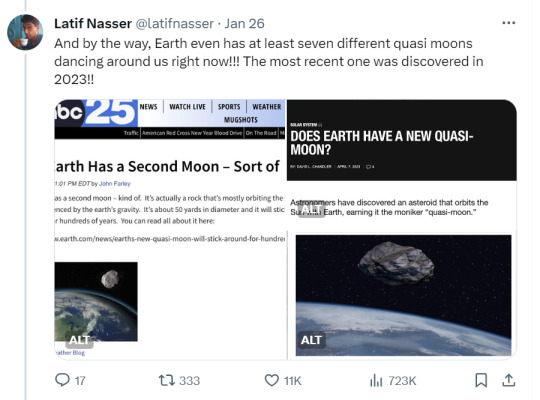

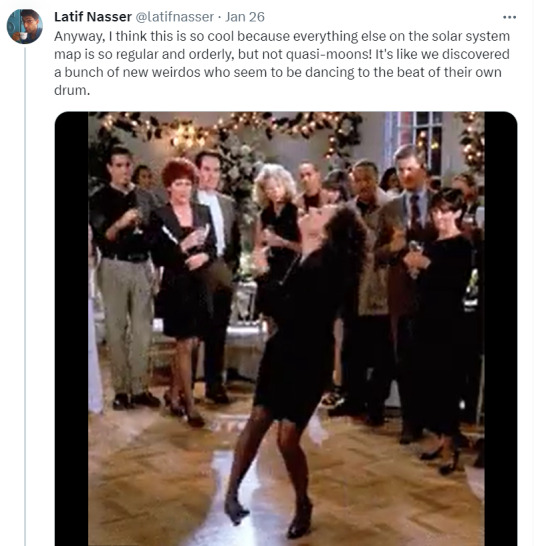
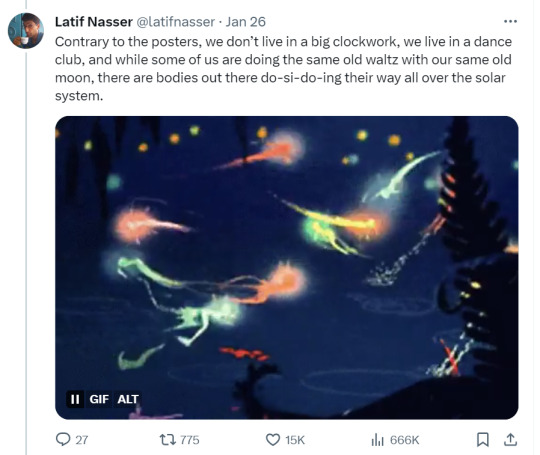
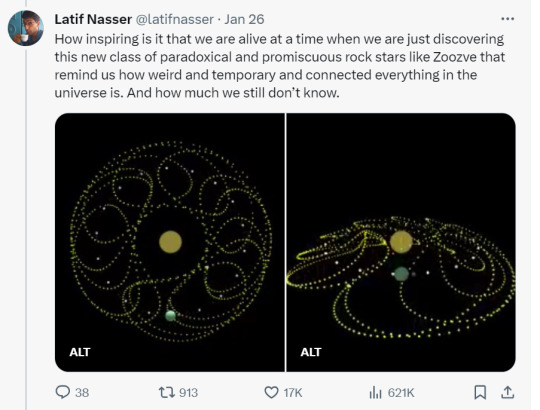
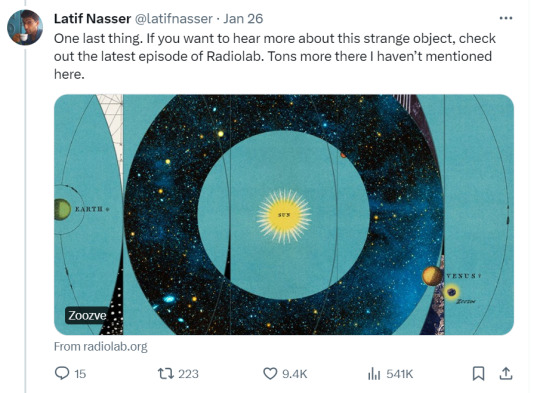
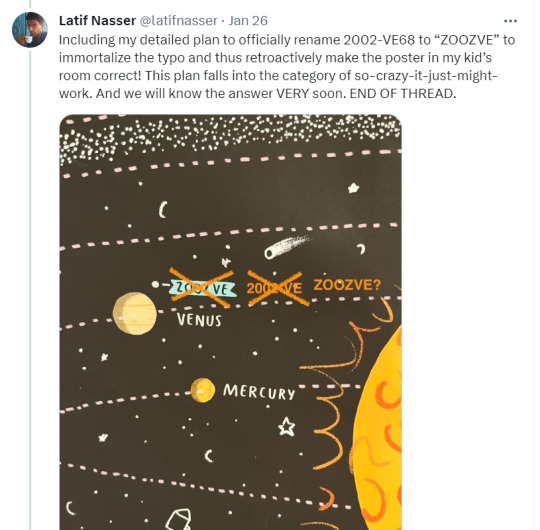
Zoozve, my beloved
#and now that i've said all that#of course this person heard about this on radiolab#i have a vendetta against radiolab#they're massive overeditors and get a bit too philosophical about scientific topics for my liking#like that “what the bleep do we know” thing except less obviously false and more unintentionally misrepresentative
153K notes
·
View notes
Text

Three ways to track Venusquakes, from balloons to satellites
Instruments aboard robotic landers have measured seismicity on the moon and Mars, helping researchers learn about the inner workings of those celestial bodies. But the internal makeup of Venus is still not known, in part because high winds and blistering temperatures make it significantly more difficult to detect quakes on the second planet from the sun.
Three approaches to studying quakes on Venus are currently plausible, write Raphael Garcia and colleagues in an article published in Earth and Space Science. Ground sensors like those used on the moon and Mars can measure seismic waves. Balloon-based pressure sensors can measure infrasound waves, a form of low-frequency waves in the atmosphere created by quakes. And satellite-based instruments can measure airglow, or light emissions from molecules in the upper atmosphere that show subtle variations when perturbed by infrasound waves.
In this study, the authors considered current estimates of seismicity on the planet to weigh the pros and cons of each method.
Sensors on Venus's surface could detect quakes smaller than magnitude 4.0, but current ground-based technologies would likely survive less than a day on Venus, where surface temperatures exceed 450°C.
Balloons similar to those used in the Soviet Vega program might survive for months, and their ability to detect and characterize seismic waves on Earth was recently documented for the first time. However, they can detect quakes of only magnitude 4.0–4.5 and larger. Satellite-based imagers taking airglow measurements could detect Venusquakes of about the same magnitude, and they may be able to gather data for years.
Airglow measurements currently offer the best option for detecting seismic activity on Venus, the authors conclude. If possible, combining airglow measurements with longer-duration balloon-based sensors would offer an even more robust approach and reduce the possibility of misinterpreted readings, they say.
Their study helps constrain requirements for future Venusian missions aimed at studying seismicity while pointing to areas for improvement. These areas include better understanding the geographical distribution of quakes and creating more detailed noise models for each technology.
IMAGE: An artist’s depiction of different methods for measuring seismic and acoustic waves on Venus: a seismometer on the ground, pressure sensors on board balloons, and infrared imagers on board orbiters. Credit: Fabio Crameri
1 note
·
View note
Link
SpaceTime Series 27 Episode 130 *Epoch of Reionization: New Insights from Webb A groundbreaking study suggests the epoch of reionization, a pivotal era in the universe's early evolution, may have occurred 350 million years earlier than previously believed. Utilising data from the James Webb Space Telescope, astronomers have uncovered a greater abundance of extreme ultraviolet emitting galaxies, challenging established models. This revelation might imply that the cosmic microwave background radiation and the Lyman alpha forest should appear different, posing a conundrum for scientists and opening new avenues for understanding the universe's history. *NASA's DaVinci Mission Prepares for Venus NASA's upcoming DaVinci mission aims to explore Venus's enigmatic Alpha Regio, a mountainous region shrouded in mystery. The mission, set for the early 2030s, will delve into whether Venus once harboured oceans and continents, akin to Earth. By reanalysing old data and employing modern techniques, scientists have enhanced the resolution of Venus's topography, offering fresh insights into its geological features and potential volcanic activity. DaVinci's descent probe will capture unprecedented high-resolution images, potentially revealing new details about Venus's surface. *China's First Reusable Satellite Test China has successfully tested its first reusable satellite, the SHY119, launched aboard a Long March 2D rocket. Recovered after 13.5 days, the mission included various payloads, such as plant seeds and technology demonstration devices. This achievement marks a significant milestone in China's Space exploration efforts, showcasing advancements in reusable satellite technology. The Science Robert A study links hearing loss in older age to an increased risk of Parkinson's disease, with effective management through hearing aids potentially mitigating this risk. In the South Australian outback, palaeontologists have discovered one of Earth's earliest life forms, dating back 550 million years. Meanwhile, a new study warns that up to 33% of frog and toad habitats could become arid by the century's end due to climate change. Additionally, a Gallup poll reveals a significant drop in support for childhood vaccinations in the US, raising concerns about herd immunity. www.spacetimewithstuartgary.com www.bitesz.com 🌏 Get Our Exclusive NordVPN deal here ➼ www.bitesz.com/nordvpn. Enjoy incredible discounts and bonuses! Plus, it’s risk-free with Nord’s 30-day money-back guarantee! ✌ Check out our newest sponsor - Old Glory - Iconic Music and Sports Merch plus now with official NASA Merch!. Well worth a look.... Become a supporter of this Podcast and access commercial-free episodes plus bonuses: https://www.spreaker.com/podcast/spacetime-with-stuart-gary--2458531/support
#administration#alpha-reggio#china#cosmic#davinci#epoch#james#jwst#microwave#mission#nasa#national#of#reionization#reusable-satellite#space#space-time#stuart-gary#telescope#webb
0 notes
Text
"The Sister's War" a prelude story for my larger "Red Pawn's Gambit" plot in my MekSol setting
Over 200 years ago, humanity left Earth for the black sea of space. Fleeing a calamity called the Weltfeuer (Worldfire), these refugees made their new homes on Mars, Mercury, and Venus. In the years since the exodus humanity developed Mechanized Armor. These Mechanized Armors, better known as meks, are massive mobile weapons platforms that dominate current military strategy. Their youthful pilots are known as Mecha-Jockeys, or mekjoks, people who push their reflexes to the absolute limit in the absurd spectacle of mek combat.
In the Venusian Empire, feudalism reigns; its main territory a kingdom made up of the planet and its seven satellite colonies. Peasants and serfs live by the whims of the Lesser and Greater House Lords, who themselves live by the law of Grand House Kertész. Mekjoks are not just pilots on Venus, but knights sworn to service.
"The Sister's War"
2nd Quarter, 225 AE (After Earth)
Outside of Ibolya Colony, Empire of Venus
House Lord Jerrid Montgomery stood quietly on the bridge of the capital ship Abandon of Cruelty, his cold brown eyes narrowing to survey the battle. The view outside of Lord Montgomery's personal ship was a sight to behold. Enemy and allied warships criss-crossed in the void of space, pockets of light illuminating their hulls as their cannons fired.
Ibolya Colony hovered, looking like a newly plucked violet blossom composed of steel and ceramic. The massive habitat hung in orbit above Venus, dwarfing the ships circling it.
The captain on Lord Montgomery's bridge barked orders and demanded updates, answered by a herald listing losses and conveying the captain's latest exclamation into workable orders for the crew. A zero-gee goblet of dry red wine swished languidly in Lord Montgomery's idling hand. He was dressed the same as his crew: a black vacuum suit with magnetic heels, a reinforced chestplate, an open helmet connected to a reserve air tank, and a set of thigh and forearm guards. The only things that distinguished him from the rank and file were his gold-plated shoulder scales and crimson sash.
The House Lord's face was youthful, despite early middle age creeping across his face in faint lines. His jaw was strong and clean-shaven, with a sharp and prominent nose held high when speaking to underlings.
"Captain, order the Discovery of Reason to fire all main guns at the Pride of Terra." Jerrid Montgomery ordered quietly, eyes scanning the distant crossfire. The captain nodded and immediately shouted. "Discovery, your Lord demands main fire on the Pride!"
The herald repeated the command, before turning to Lord Montgomery and bowing their head. The House Lord briefly gave an acknowledgement before returning to his assessment.
The battle had been going so well, just as Queen Katrina's strategists had predicted against her sister Queen Magdolyn's forces. Lord Montgomery had driven his six ships in as a wedge, aiding Lady Avci to break the defense outside of Ibolya Colony. With any luck, the day would end with the boarding and liberation of the colony from loyalist forces.
"Lord Montgomery, a message from Lady Avci!" the herald declared.
"Patch it to my device." Jerrid commanded, gulping a swig of the wine.
Lady Avci's voice filled Jerrid's earpiece almost immediately "I'm deploying in my varjú. Requesting reinforcements to aid my attack on the Crawl."
Jerrid's eyes scanned the holographic representation of the battlefield behind him. Dozens of multi-color blips immediately registered as names, crew sizes, and armaments in his mind's eye. Jerrid's time as an admiral before the civil war was certainly paying off. He had even spent a month inspecting the Crawl of Progress, the ship Lady Avci was asking him to help destroy.
"Captain, deploy a macská... and a squad of hangyák." Jerrid said, an idea striking him.
The captain and herald immediately made it so.
"Herald," Jerrid said, stroking his jaw. "Put me in touch with Dame Greeson."
---
Cordelia Greeson stalked through the Abandon's hallway, genially clapping the shoulder of a heavily armored shock trooper as she passed. Cordelia was dressed from heel to throat in her mekjok armor, a sleek insectoid carapace of red ceramic over her black vacuum suit. The crimson helmet hung in her other hand, swishing with her strides.
The macska in the mekbay was built in the likeness of Old Earth's domestic cat, laying on all four of its huge legs. Even prone, the mechanical beast stood at over 8 feet tall, and 20 feet long with its tail tucked against its back. While Venusian meks traditionally had white armor plating cut with House colors, Cordelia's and all other meks sworn to the Rebel Queen Katrina had painted their meks black. Black for the dark task of rebellion, a shroud of mourning for the siblings inevitably slain.
Cordelia smiled as she pushed from the mek bay's deck and disengaged the magnets in her boots. She lifted from the ground instantly, her body sailing towards the macska's cockpit, set just in front of its right "ear". Cordelia braced against the metal plating to a gentle thunk before entering her access code into a recessed panel. The door slid open, revealing the cockpit compartment.
Cordelia swiftly swung her body through, settling into her chair as the mek's fusion-solar power core hummed to life in the Macska's belly. Cordelia buckled her chest and lap straps as she settled her feet onto the two pedals, each segmented for forward and reverse.
CONFIRM IDENTITY her macska's central display screen challenged. The two on opposite sides were still off, awaiting Cordelia's next move.
Cordelia unspooled a cable from each of her wrist bracers, plugging them into the base of a pair of joystick controllers. Immediately the data from her suit was confirmed by the display.
GREESON, CORDELIA the three displays flashed, as the macska's secondary systems booted up. Technical readouts flashed before Greeson's eyes, showing the pristine condition of her mek from the inside-out. Greeson smiled as she flicked a series of switches above her. The display screens switched over to a 180⁰ view in front of the macska's head, with a Heads-Up Display showing munitions and system alerts.
Greeson's helmet beeped to signal its communication suite was connected to the mek, as the macska drowsily rose onto all fours. Even from her cockpit, Greeson could hear the cacophonous first steps her mek took towards the airlock. The steps jostled the cockpit, somewhat exaggerated by the low gravity within the Abandon.
"Dame Greeson, taking off" Cordelia said into her suit's headset, waiting for the green light above the mek bay's door.
"Standby, milady. Depressurizing in 3...2...1. Clearance granted! Jó vadászatot!" The Abandon's herald replied.
(Jó vadászatot [Yo va-das-a-tot] = Good Hunting)
The mek bay's door opened, revealing the stillness of space. The only sights marring the pitch black were the pinpricks of starlight, and the far off explosions of meks engaged in combat. The macska pounced from the door, the thruster systems installed beside its four paws guiding the mechanical beast onto a path to join the melee. Cordelia willed her teeth to unclench as she felt her pulse start to race.
Two allied hangya meks swiftly followed Cordelia from their respective bay, wings spread wide to give them flight. The meks were only slightly smaller than hers, designed in the likeness of creatures from Old Earth called ants.
The trio streaked across space, Cordelia relaying commands as she adjusted her macska's sights. Already her index fingers were tensed over the triggers of her joysticks, thumbs just beside the red buttons that would unleash a barrage of high-explosive anti-mek missiles.
The battlefield had formed a halo around Ibolya Colony, a ring of warships and meks, peppered by the fearsome coronas of solar-fusion reactors gone critical. The destroyed meks ballooned into rapidly decaying bodies of radioactive plasma, threatening to swallow those that came too close.
"Lady Avci, this is Dame Greeson, here at your request." Cordelia spoke into her headset as the House Lord's mek and entourage came in sight.
The varjú had been designed after the Old Earth crow, and would have been nearly invisible with its metallic black plating if not for the cerulean trim to distinguish it as Lady Avci's Custom. She was flying alone, a risky choice she had made many times before.
"Very good, it would please us greatly to have you provide cover fire. Your Lord Montgomery should be firing his first barrage on the Crawl any moment now." Lady Avci replied curtly "The enemy is sure to deploy distractions any moment now."
As if on cue a squad of enemy meks showed up on Cordelia's sensors, exiting the Crawl's mekbays. Cordelia could feel her heart pulse in her throat as she growled "Hangyák, behind me! Attack!" Diving her macska in the direction of the enemy.
The hangyák meks followed close behind, the enemy rising to meet them. Cordelia's fingers tightened on her joysticks to a white knuckle grip under her gloves. She'd fought in three skirmishes since her knighthood, and nearly died in the second. Any slip up was liable to make her fourth battle the last. Just another furious cloud of purple plasma disappating alone in the black sea.
The enemies, a squad of four hangyák, opened fire with barrages of missiles and armor piercing slugs towards Cordelia and her allies. Cordelia gasped with the lurch she sent her macska into to dodge the worst of it. The few shots that connected to her mek made the machine rattle, jolting Cordelia in her seat.
"Weapons free! Open fire!" Cordelia cried on her comms as she righted her mek, slamming her thumbs on the red buttons on her joysticks.
Cordelia's macska's shoulder pods opened, twin compartments launching a barrage of missiles towards the enemy meks. Cordelia's wingmates fired as well. One of Cordelia's missiles slammed into an enemy mek's head, shattering it as the rest of its body burst like a grenade into searing plasma. One of Cordelia's allies similarly destroyed another enemy mek, leaving two behind.
Cordelia exhaled slowly as she swiveled her mek to dodge the counter-barrage. One of her wingmates didn't fare as well, taking a hangya slug in the torso. While the reactor didn't go critical, Cordelia gritted her teeth as she knew the pilot was dead at best.. or wished he was at worst.
"Prepare for melee, charge!" Cordelia cried, firing her mek's claw cannons. The shots flew wide, but broke the enemy's attack pattern smoothly.
"Confirmed" her remaining hangya ally replied, engaging their thrusters to maximum.
"For Queen Katrina" Cordelia said as she engaged her mek's transformation, plunging down a handle in the center of the console.
The macska's arms and legs straightened themselves as the hind paws collapsed on each other into boots. The forepaws lengthened into fiercely clawed hands, the head repositioning to face forward on the new humanoid form. This was a gift given to only the most respected knights of Venus, an honor Cordelia had earned in her second battle.
Cordelia's hangya launched itself forward with renewed speed as the Abandon of Cruelty fired its main gun into the Crawl of Progress' hull, shattering its bridge in a near instant. The crew would evacuate or soon die in the cascading ship-wide failures to come.
Lady Avci's mek finally joined the fray, her varjú's guns punching twin holes into one of the two remaining hangya. Cordelia yelled in savage fury as her macska lurched for the last hangya, now trying to flee. Cordelia could almost feel her humanoid macska's clawed hand crunch into the hangya's head. The claw's hydraulics building in pressure around the enemy cockpit section, building, building until-
0 notes
Text



Pics:
1 & 2. The permeability of Lovecraft into our modern cultural landscape shows no (yellow) sign of slowing down...
3. Venus, in a weird looking satellite radar image.
1909 Output:
Intro: "Venus & the Public Eye" is an article, written by Howard, for the Providence Sunday Journal. It was published on December of 1909.
I guess this was his way to finish off his newspaper column. Since, after this, he stopped writing for them.
But, HPL never really stopped writing.
It's more correct to say that he shifted all of his efforts into his Astronomical Notebook.
Anyway, this essay opens up with Lovecraft bemoaning "the general ignorance of the public (regarding) astronomy (which he) has often... noticed & deplored."
The reason for this barb is something that Howard saw on Christmas Eve.
A # of people were looking (up) at the sky.
HPL was pleased, thinking they were admiring the bright view of Venus.
But, these particular folk thought that Venus was actually an 'airship' (blimp or zeppelin) owned by a local merchant!
Worse, when 'corrected', the viewers's surprise was rather mild. They seemed more disappointed - that the planet wasn't an airship!
The reason why Venus was so interesting to Lovecraft, was the possibility of life there!!
Many scientists thought of Venus as a hot, steamy jungle world! A whole planet full of new fauna & flora...
Even Howard mused that, any Venusians would rarely see the heavens - due to Venus's extensive cloud cover!
It would take 25 years (after HPL's death) for the truth to be learned. Venus is the closest thing to Hell in our solar system!!
This is a world of high temps (475° C - higher than Mercury!) & destructive air pressure (some 1,000 times Earth's pressure at sea level)...
It's atmosphere is the result of a run- away "hot-house" effect & its air is made up of carbon dioxide, nitrogen & oxygen!!
Large scale volcanic eruptions; plus, thunder & lightning create sulphur dioxide 'seasons'...
Every metal Earth probe sent there, has been crushed into rubble & destroyed - minutes after landing!!
But, we're getting better at it! The last Russian probe lasted a surprising whole hour!!
0 notes
Text
The Venera program: Interplanetary probes from behind the Iron Curtain
The Pioneer and Voyager probes the United States sent to explore the outer planets in the 1970s are often, and accurately, lauded as historic interplanetary achievements. That’s partly because, equipped with the Pioneer Plaque and the Voyager Golden Record, these objects are ostensibly meant to be found by aliens someday, helping them easily burrow into public consciousness. Similarly, robotic explorers to Mars, including the Viking landers and the Sojourner, Spirit, Opportunity, and Curiosity rovers, take innumerable headlines, and they’re often even given anthropomorphized personalities.
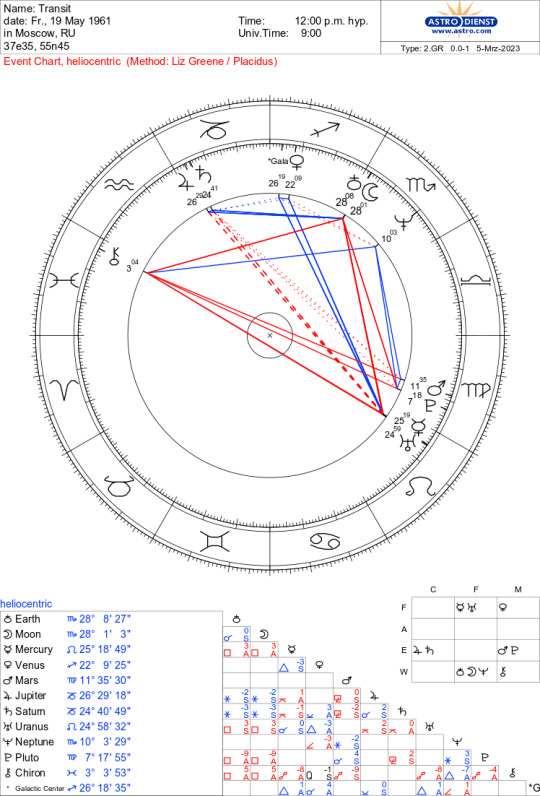
Almost forgotten, however, are the ambitious Soviet exploration missions of Venus. Beginning at the dawn of the Space Age in the late 1950s, the Soviets worked to design and construct a series of Venus probes. And for almost 30 years, they built and flew the interplanetary spacecraft as part of the Venera program — carrying out rather impressive feats, even by today’s standards.
In the early 1960s, the Cold War was in full swing and the Space Race was on. The Soviets were eager to notch as many “firsts” as they could in all realms of spaceflight. At that time, they had a better heavy-lifting capability than the United States. This allowed them to build and launch larger spacecraft, both manned and unmanned. And by using four-stage rockets and an advanced telemetry system, the Soviets could also mount missions to the difficult-to-reach inner planets.
Venera 1, the first probe in the series of Soviet Venus missions, weighed in at an impressive 1,400 pounds (at just 184 pounds, the first satellite, Sputnik 1, was a mere featherweight in comparison). Somewhat resembling a Dalek from Doctor Who, the Venera 1 probe was spin stabilized and packed with instruments, including a magnetometer, Geiger counters, and micrometeorite detectors. And like many of its successors, the interior of the probe was pressurized to just over one atmosphere with nitrogen gas to help the instruments function at a stable temperature.
However, the first Venera 1 probe never made it out of Earth orbit. And the second attempt, launched February 12, 1961, failed en route to Venus, though it did pass within about 62,000 miles (100,000 kilometers) of the planet.
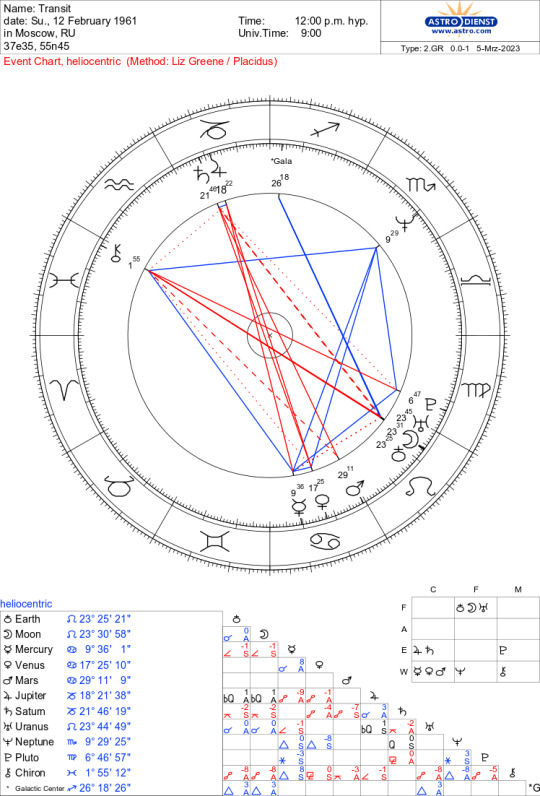
Venera 2, which greatly resembled Venera 1, was built to fly past Venus, during which it would record information and transmit it back to Earth. And the probe did complete its flyby on February 27, 1966, coming within about 15,000 miles (24,000 km), but it also overheated and was never heard from again. It’s still unclear whether Venera 2 failed before or after it zipped by the distant world.
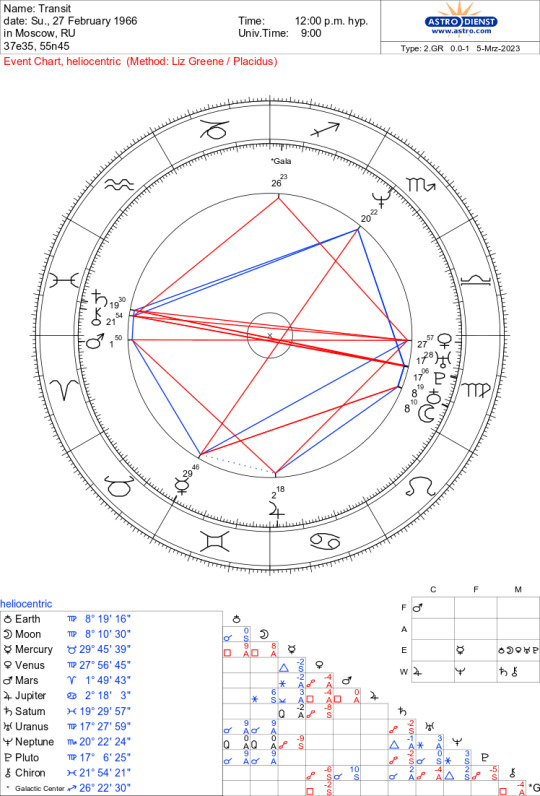
The Soviets designed the next four probes, Venera 3 through 6, to more closely study the atmosphere of our hellish neighbor. Generally weighing about 2,000 pounds (900 kilograms) each, these probes contained a suite of instruments and a detachable pod (known as a descent module) equipped with a second collection of devices that included a barometer, a radar altimeter, gas analyzers, and thermometers. Not all of these probes ended in success, though.
Venera 3 planned to land on the venusian surface, but it instead slammed into it on March 1, 1966 — officially making it the first spacecraft to crash into another planet.
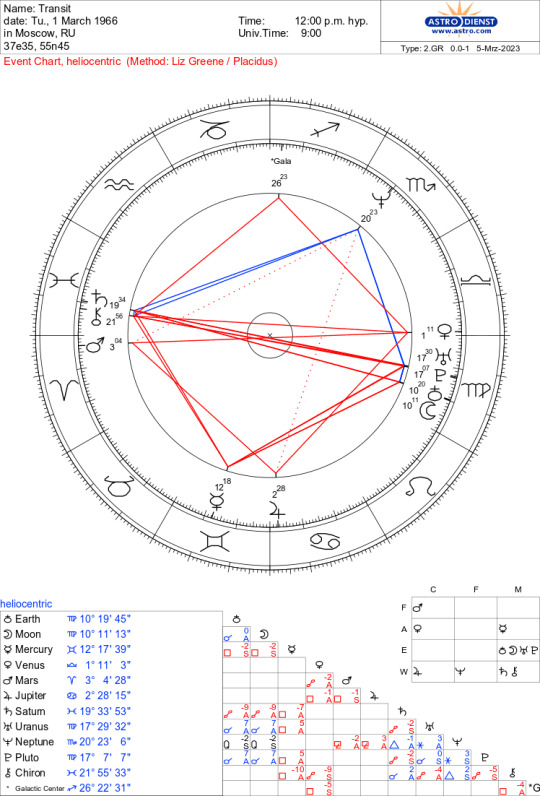
Venera 4, however, spent more than 90 minutes taking measurements as it slowly floated down through the dense atmosphere of Venus on October 18, 1967. It also detected very elevated levels of carbon dioxide in the air, as well as a lack of a global magnetic field. And as expected, it eventually succumbed to the planet’s intense heat and pressure.
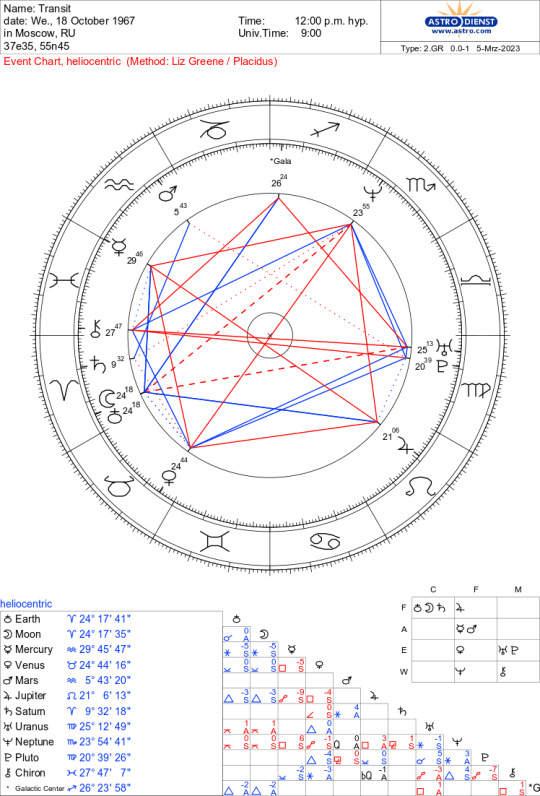
Both Venera 5 and Venera 6 were likewise successes, transmitting back data for more than 50 minutes as they parachuted through the atmosphere of Venus on May 16 and May 17, 1969. By helping scientists further characterize the atmospheric composition of world, these probes made it clear that Venus is highly unlikely to host life; romantic hopes of Venus as an earthly paradise were dashed.
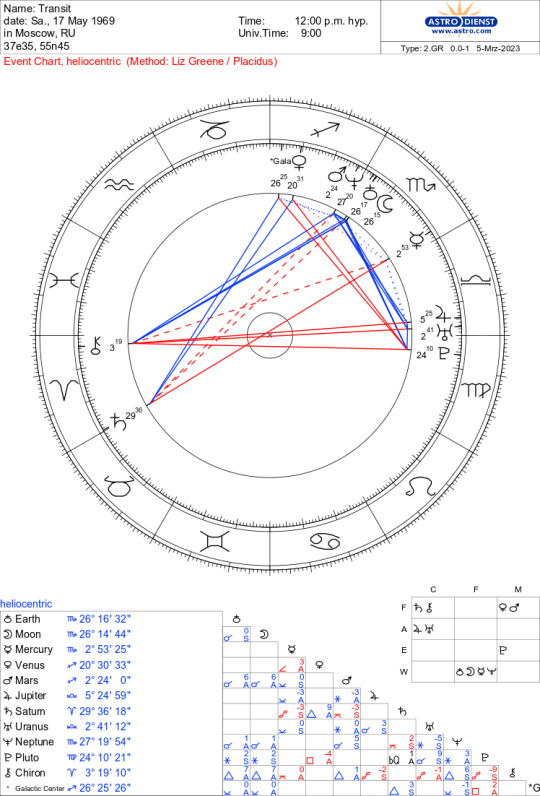
Venera 7 included an even more ambitious descent module designed to make a soft landing on Venus, which included heavy fortifications so it could briefly survive the inhospitable conditions on the surface. Launched August 17, 1970, the flight was a success of sorts. The lander made it to the surface on December 15, 1970, but it got there after its parachute ripped, causing it to fall faster than planned for nearly 30 minutes before smacking into the surface at about 38 miles per hour (61 km/h).
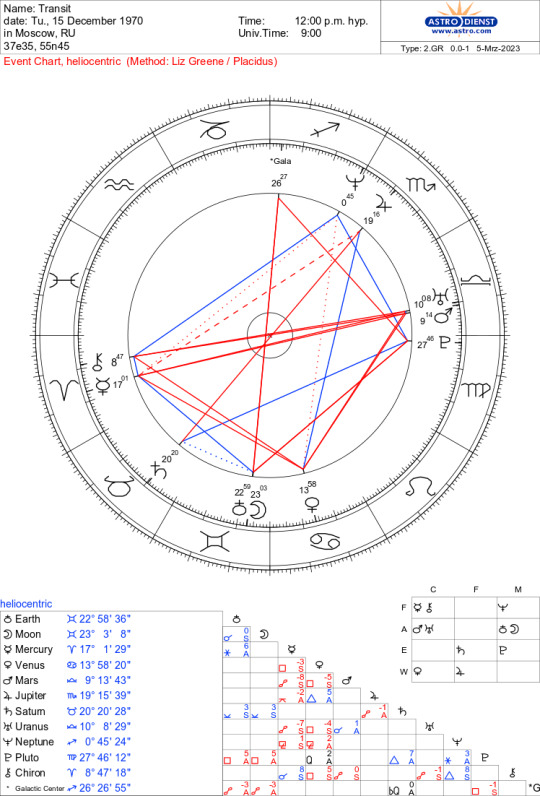
Initially thought to have failed, Venera 7 did manage to transmit meaningful data for a short period of time. For example, the lander measured a surface temperature of almost 900 degrees Fahrenheit (475 Celsius), or about as hot as a brick pizza oven. Although the probe’s pressure sensor failed during descent, researchers were able to use its measurements to estimate a surface pressure of about 92 bars, which is about what you would experience if you were more than a half mile (900 meters) underwater.
Venera 8 repeated much of the Venera 7 mission, albeit without its lander falling over when it reached the surface of Venus on July 22, 1972. Venera 8’s functioning pressure sensor confirmed Venus’ oppressive atmosphere, but it also took measurements of ambient light levels on the surface, confirming that future cameras should be able to capture the venusian sights.
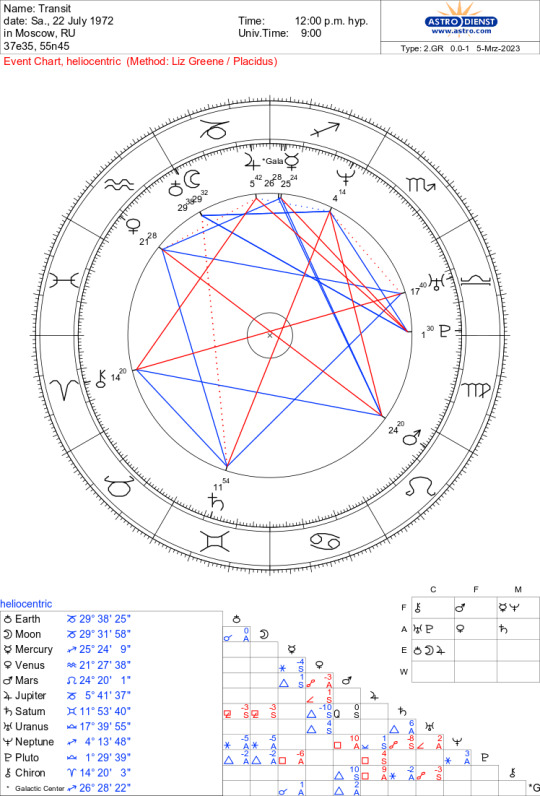
Of all the Soviet missions to Venus, Venera 9 through Venera 12, weighing roughly 11,000 pounds (5,000 kg) each, are the best remembered to this day. That’s mainly because their landers carried cameras that could directly image the surface.
Venturing to Venus between 1975 and 1978, several of the cameras on these probes failed, usually due to their lens caps not coming off. But nonetheless, a few managed to take and transmit the very first images from the surface of our solar system’s second planet.
The early snapshots obtained by Venera 9 and Venera 10 are haunting. Crisp, clear, and spherically distorted by their wide-angle lenses, they depict a harsh and rocky alien landscape extending out to the horizon. But the images also managed to capture the edges of the landers themselves, which reveals their distinctly Soviet design.
Venera 13 and Venera 14, both launched in 1981, were more advanced versions of the Venera 9 through 12 probes, carrying landers equipped with sophisticated acoustic devices that could tune in to the Venusian wind to gauge its speed.
Venera 15 and Venera 16, each weighing just under 9,000 pounds (4,100 kg), did not carry landers. In their place they brought highly advanced radar-based imaging systems that could map the blistering world from elliptical orbits. The Pioneer 12 probe may have been first to map Venus using radar, but Venera 15 and 16 did it better, reaching a resolution of about a mile (1 to 2 km) per pixel. The images returned by these probes were fantastically detailed, revealing broad swaths of the harsh landscape, complete with impact craters, dramatic rises, and lava-flooded basins.
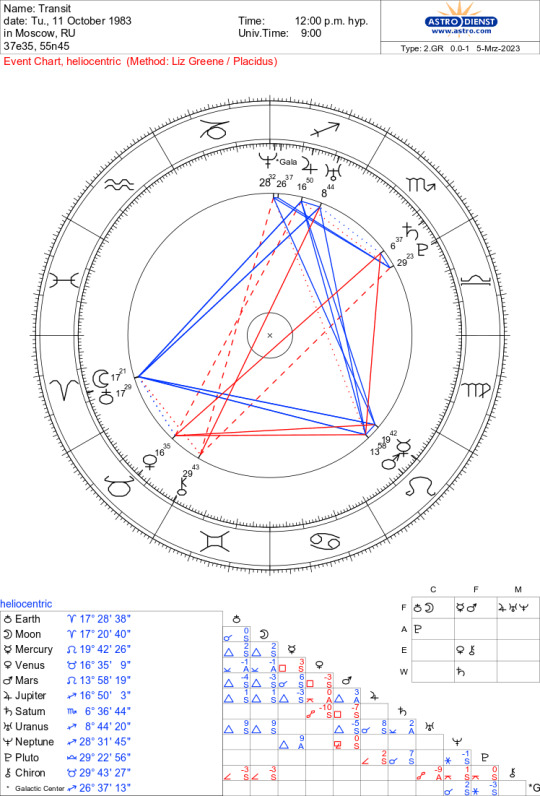
The U.S. made its mark on the exploration of Venus through missions like Pioneer 12 and the wildly successful Magellan, and other craft sent by the European and Japanese Space Agencies also contributed to our understanding of our planetary neighbor next door. Still, the Soviet Venera program remains the most intense and sustained series of missions to Venus yet.
And at least for now, that doesn’t look like it’s going to change soon.
0 notes
Photo

Biomarker Phosphine Discovered in the Atmosphere of Venus : Could there be life floating in the atmosphere of Venus? Although Earth's planetary neighbor has a surface considered too extreme for any known lifeform, Venus' upper atmosphere may be sufficiently mild for tiny airborne microbes. This usually disfavored prospect took an unexpected upturn yesterday with the announcement of the discovery of Venusian phosphine. The chemical phosphine (PH3) is a considered a biomarker because it seems so hard to create from routine chemical processes thought to occur on or around a rocky world such as Venus -- but it is known to be created by microbial life on Earth. The featured image of Venus and its thick clouds was taken in two bands of ultraviolet light by the Venus-orbing Akatsuki, a Japanese robotic satellite that has been orbiting the cloud-shrouded world since 2015. The phosphine finding, if confirmed, may set off renewed interest in searching for other indications of life floating high in the atmosphere of our Solar System's second planet out from the Sun. via NASA
457 notes
·
View notes
Text
Wow, there is already a track on Bandcamp named for Zoozve, Venus's quasi-moon, by downtempo trip hop act Marian Apparitions
#music#downtempo#trip hop#Zoozve#Venus#planet venus#venusian satellite#venusian moon#quasi moon#Marian Apparitions#solar system#natural satellites#quasi satellite#venusian#Bandcamp
5 notes
·
View notes
Text

This has to be at least my fourth time trying to make a writblr, hopefully this time it’ll stick. I’m Ari, a 24yo butch lesbian (she/her) who draws, bookbinds, and makes zines in addition to writing. I mainly write scifi but I’ve been known to put out the occasional bit of fantasy and even a poem or two. I’ve got two novels in the works right now and some vague ideas for more, plus a dozen ocs who don’t have a home. Hopefully in a few days I’ll get around to making proper intros for the novels.
Projects
Sunrise Over Venus: a sci-fi suspense novel.
Venus has a drug problem. A "psychotropic drugs are addictive and overprescribed" drug problem. A "Mars has a monopoly on all atristeine sales" drug problem. An "illegal Sunshine market has sunk its claws in from the hospitals to the street dealers" problem. Sunshine is easier and cheaper to acquire than legal atristeine, and the Martian cartel has made a killing by undercutting the legal market.
Dominic Vanark arrived on Venus with just a backpack and a dream. So did Perigee James, from the Belt. So did Sascha Hargrave, from a Martian satellite. Venus is a safehaven for immigrants like these, even the drug addicts and ex-cartel. The Venusian sunshine market is corrupt and life-ruining, and Dominic believes he's found just the group of allies to shake up the system.
wip intro post here
Under Your Sky: a sci-fi romance novel.
New Vandenberg isn't anyone's first, second, or even third choice of a home; it's just somewhere people end up. For Slava, Earth itself was a last choice. Since he was a child, his mother spoke of raising her children planetside, and if Earth was the only place that would take a passport-less space wanderer, then this was where he would honor her last wish.
Earth has not been kind to him. Earth is cruel, New Vandenberg, California is cruel, but he paid for his one-way shuttle ticket and fully intends to live with the costs. Kelly Nehar, the complete stranger who took him in, isn't cruel. Kelly is kind and curious and dreams of leaving this miserable planet - and everyone on it - light-years behind. For now, though, they're stuck on the ground together.
wip intro post here
60 notes
·
View notes
Text
Venusian vs Venerian.
Venusian wins every time. It sounds so much better and its so much more clearly descriptive. You can tell where the person is from. Meanwhile Venerian?? How is that helpful?? I wouldn't have known they were from Venus without being explicitly told. I thought it was a fake country at first.
Anyways I need to find a list of planets and moons and other satellites in the solar system and just make lists of possible descriptors for people from them.
People from the moon could clearly be called Lunian. People from the sun Solian. Earthling is already established, I also saw Eartherian one time I think, then there's obviously Martian, I forgot the name for people from Jupiter...
Edit: people from Jupiter get called Jovian
Feel free to suggest names if you know any, I'll make a list tomorrow.
I just love sci-fi where it's just an assumption that all planets produce sentient life :)
2 notes
·
View notes
Text

New SpaceTime from StarStuff Studios
#science#space#astronomy#physics#news#nasa#astrophysics#esa#spacetimewithstuartgary#starstuff#spacetime#jwst#james webb space telescope#gravity#hubble space telescope#hubble telescope#hubble
1 note
·
View note
Photo

2020 September 15
Biomarker Phosphine Discovered in the Atmosphere of Venus Image Credit: ISAS, JAXA, Akatsuki; Processing: Meli thev
Explanation: Could there be life floating in the atmosphere of Venus? Although Earth's planetary neighbor has a surface considered too extreme for any known lifeform, Venus' upper atmosphere may be sufficiently mild for tiny airborne microbes. This usually disfavored prospect took an unexpected upturn yesterday with the announcement of the discovery of Venusian phosphine. The chemical phosphine (PH3) is a considered a biomarker because it seems so hard to create from routine chemical processes thought to occur on or around a rocky world such as Venus -- but it is known to be created by microbial life on Earth. The featured image of Venus and its thick clouds was taken in two bands of ultraviolet light by the Venus-orbing Akatsuki, a Japanese robotic satellite that has been orbiting the cloud-shrouded world since 2015. The phosphine finding, if confirmed, may set off renewed interest in searching for other indications of life floating high in the atmosphere of our Solar System's second planet out from the Sun.
∞ Source: apod.nasa.gov/apod/ap200915.html
150 notes
·
View notes
Text

The Phorcys’ crew having regrouped from the shoot out with members of the Inaros OPA proceed with their job for Anderson Dawes deploying communications relays that on closer inspection have military grade security protocols, and a matte black finish that camouflages them will in the black of space.
Cracking the case, Tatum adds some mods that will let them find the satellites in case something goes sideways or leverage is needed. Pushing sunward at 1G they eventually make it to Venus where things are odd. Making matters worse a Martian attack group of a Morgaina class destroyer (The Saguaro) and two Asp class fast-attack ships (the Copperhead and Taipan) meet the Phorcys above the clouds of Venus.
Some unpleasantries are exchanged, over flight plans, who can or can’t be around Venus, and who owns the Phorcys, with neither side backing down.
The captain of the Saguaro orders the MCRN ships fire torpedoes at the Phorcys. The Phorcys runs as Ethan operates the new PDCs (point defense cannons) that knock down each torpedo as they come into range. The debate of can we outrun the torpedoes is had in short order as the flesh is weak but steel and ceramic are much less vulnerable to the effects of high G acceleration.
Tatum feverishly works out an ECM package while Uthke tries to negotiate an exit from the situation, opening a tight beam to the captain of the Copperhead, William “Wild Bill” Houston, who Uthke has known for years.
Negotiations go nowhere but a burst of EM static followed by some high G maneuvers and the Phorcys starts to gain distance on the MCRN ships but not without a cost, the organ crushing acceleration leaves the pilot Kian unconscious and the rest of the crew nauseous and exhausted.
Their pursuers break off as the destroyer has vanished, gone and the fast attack ships meet the same fate being disassembled in an instant on the edge of the Venusian atmosphere. Reviewing video from their scopes, Tatum calls for a full stop.
1 note
·
View note
Photo

Biomarker Phosphine Discovered in the Atmosphere of Venus via NASA https://ift.tt/3mmwKD3
Could there be life floating in the atmosphere of Venus? Although Earth's planetary neighbor has a surface considered too extreme for any known lifeform, Venus' upper atmosphere may be sufficiently mild for tiny airborne microbes. This usually disfavored prospect took an unexpected upturn yesterday with the announcement of the discovery of Venusian phosphine. The chemical phosphine (PH3) is a considered a biomarker because it seems so hard to create from routine chemical processes thought to occur on or around a rocky world such as Venus -- but it is known to be created by microbial life on Earth. The featured image of Venus and its thick clouds was taken in two bands of ultraviolet light by the Venus-orbing Akatsuki, a Japanese robotic satellite that has been orbiting the cloud-shrouded world since 2015. The phosphine finding, if confirmed, may set off renewed interest in searching for other indications of life floating high in the atmosphere of our Solar System's second planet out from the Sun.
(Published September 15, 2020)
8 notes
·
View notes